
Fundamentals
The essence of Scalp Well-Being, at its most fundamental level, describes the optimal state of the skin that cradles the hair, extending from the forehead’s hairline to the nape of the neck. It encompasses the intricate balance of its physiological functions, ensuring a thriving environment for hair growth and vitality. Imagine the scalp as the fertile soil from which a plant draws its life; a vibrant garden requires rich, balanced earth, and similarly, healthy hair emerges from a nourished, harmonious scalp. This primary understanding forms the bedrock for any meaningful discourse on hair health, particularly for those with textured hair, where the connection between the scalp and the strand holds profound significance.
A healthy scalp is not merely the absence of discomfort or visible issues; it is a dynamic ecosystem where follicles breathe, sebaceous glands regulate moisture, and a delicate microbiome flourishes. When this intricate balance is maintained, the scalp can effectively shield against environmental stressors, support robust hair development, and contribute to the overall comfort of the individual. Conversely, any disruption to this equilibrium, whether from external aggressors or internal imbalances, can lead to a cascade of concerns, manifesting as irritation, flaking, or even impediments to hair growth. The very definition of scalp well-being, therefore, begins with this foundational recognition of its biological purpose as the primary anchor and nurturer of every strand.
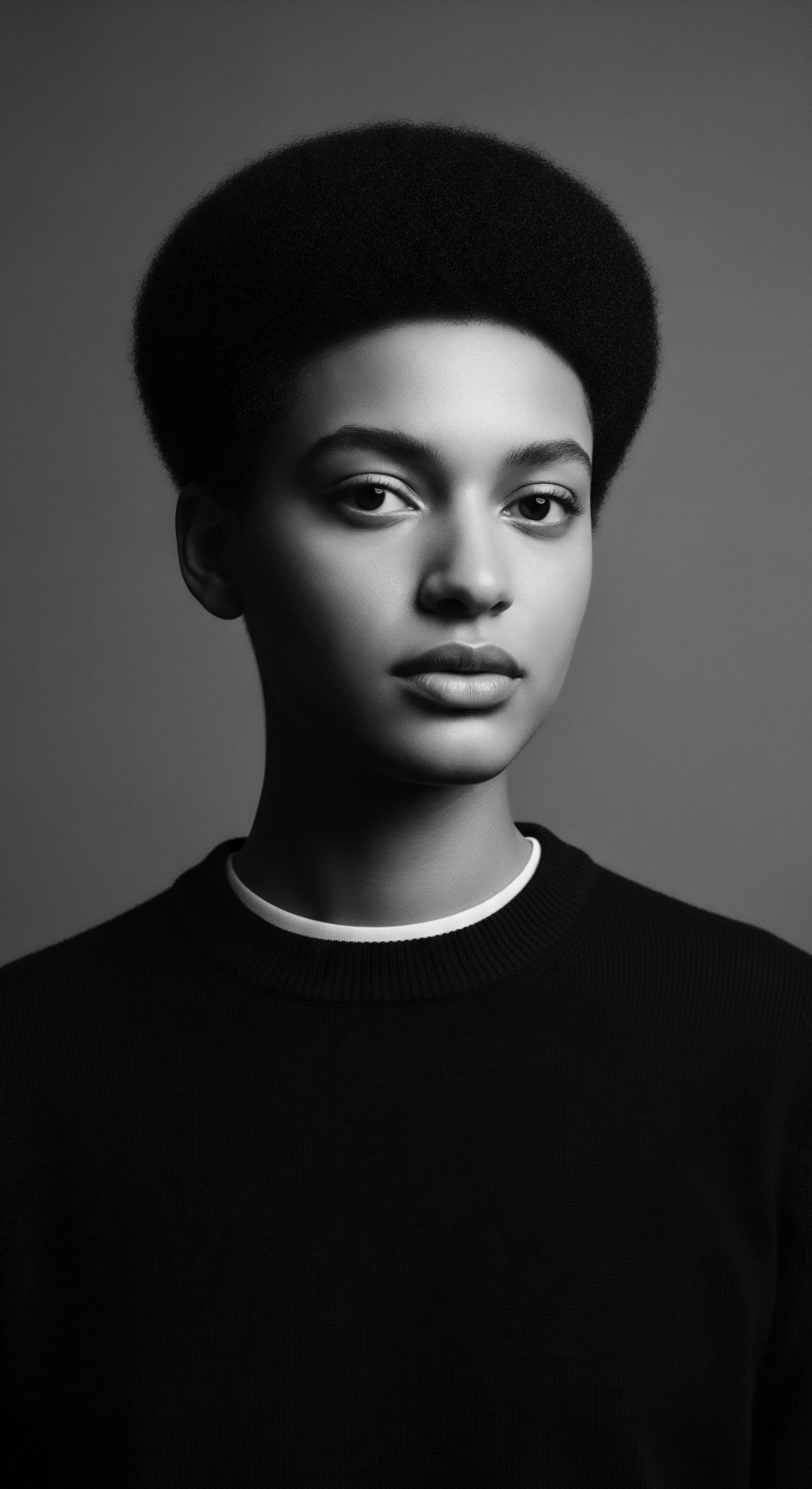
Early Glimmers of Care
From the earliest communal gatherings, humanity intuitively understood the connection between the scalp and the strength of the hair. While the scientific nomenclature of “Scalp Well-being” is a modern construct, the practice of tending to the head’s crown holds an ancient lineage, particularly within communities where hair carried immense cultural and spiritual weight. These initial acts of care were often simple, yet deeply purposeful, involving natural elements readily available from the earth.
Across various ancestral traditions, especially those that birthed the rich heritage of textured hair, the scalp was seen as a sacred space. Early care rituals were not merely about cleanliness; they were acts of reverence, of connection to self and to the communal spirit. The application of natural oils, the gentle manipulation of the scalp during styling, and the protective wrapping of hair all served to safeguard this vital foundation. These practices, passed down through oral traditions and lived experience, laid the groundwork for a holistic understanding of scalp health that would resonate through generations, even as societies evolved and new challenges arose.
The scalp, a living ecosystem, serves as the fertile ground for healthy hair, its well-being echoing through every strand.

Initial Protective Gestures
In the dawn of human civilization, particularly within African societies where textured hair first evolved, the care of the scalp was inextricably linked to survival and social expression. Evolutionary biologists posit that the spiraled structure of Afro-textured hair, with its wider follicular pattern, provided an adaptation to intense heat, allowing more air to circulate and cool the scalp. This natural design inherently necessitated specific care to maintain its protective qualities and prevent breakage. Early human communities, observing these inherent characteristics, developed rudimentary yet effective methods to shield the scalp from the elements.
These initial protective gestures often involved covering the head with cloths, leaves, or animal skins, providing a physical barrier against sun and dust. The application of natural clays or plant-based concoctions also served to cleanse, soothe, and offer a layer of defense to the scalp. While perhaps not articulated as “scalp well-being” in a clinical sense, the underlying intention was precisely that ❉ to maintain the health and comfort of the scalp to ensure the hair’s continued ability to protect and signify. This foundational understanding, born from observation and necessity, would deepen and diversify over millennia, becoming intertwined with cultural identity and communal practice.

Intermediate
Stepping beyond the elemental understanding, the intermediate interpretation of Scalp Well-Being acknowledges its profound interconnectedness with the physiological systems of the human body and the ancestral practices that have shaped its care, particularly within the textured hair community. It is an exploration of the scalp not merely as skin, but as a complex dermatological landscape, replete with hair follicles, sebaceous glands, sweat glands, and a resident microbial community, all working in concert. When this intricate biological orchestra performs harmoniously, it lays the optimal groundwork for the emergence of strong, resilient hair fibers. The scalp’s condition directly influences the hair’s very life cycle, from its genesis within the follicle to its eventual shedding.
The definition expands to encompass the nuanced interplay of internal factors, such as nutrition, hydration, and stress, with external influences, including environmental pollutants, styling practices, and product ingredients. A balanced scalp pH, regulated sebum production, and unimpeded follicular openings are all critical components of this intermediate understanding. Disruption to any of these elements can precipitate common concerns like dryness, excessive oiliness, flaking, or irritation, signaling a departure from optimal scalp well-being. The conscious selection of gentle cleansing agents, the consistent application of moisturizing treatments, and the mindful approach to styling become vital rituals in maintaining this delicate balance.
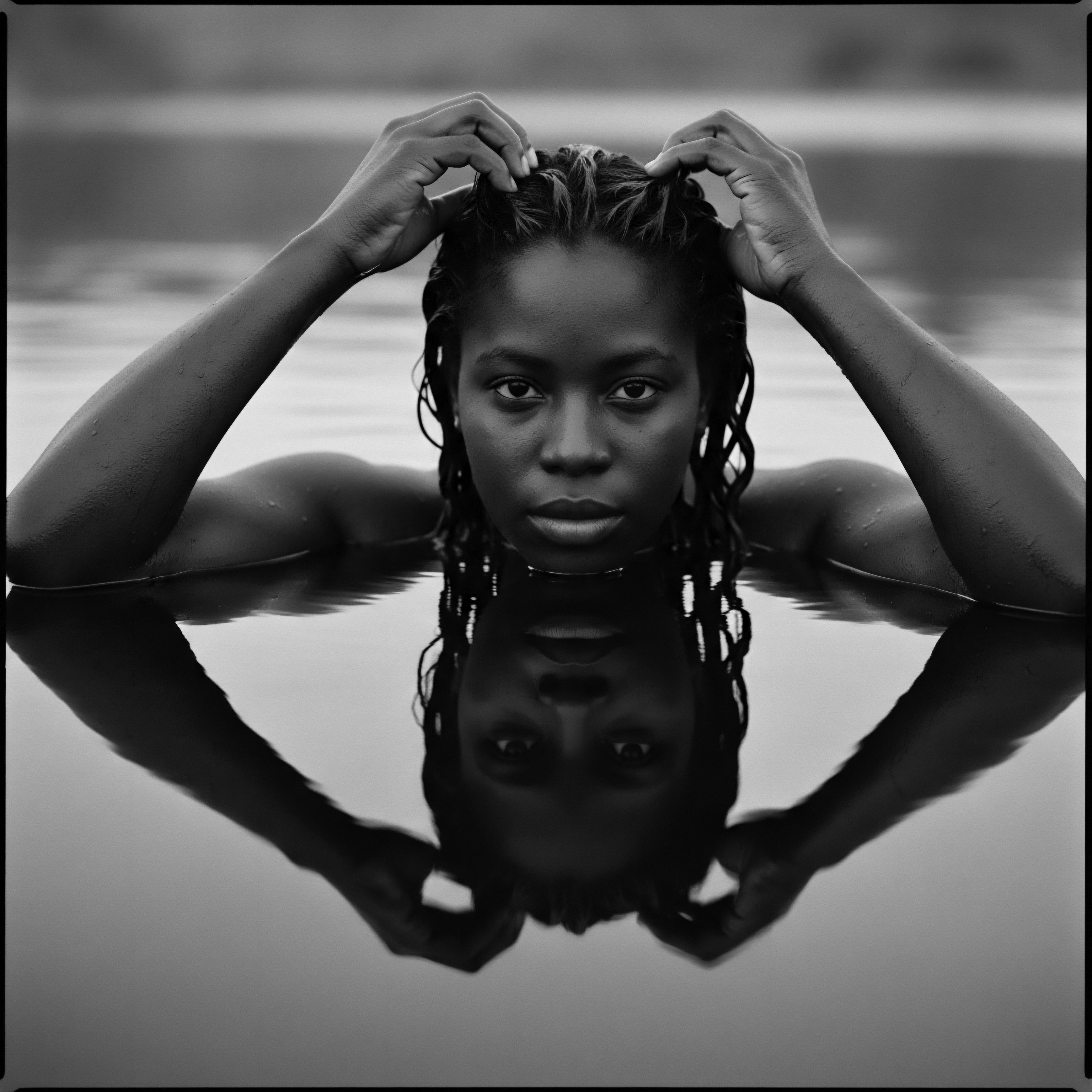
Echoes from the Source ❉ Traditional Practices
Within the ancestral wisdom of African and diasporic communities, the care of the scalp was rarely a solitary endeavor; it was a communal ritual, a shared act of connection and preservation. These practices, steeped in generations of observation and natural resourcefulness, offer profound insights into the holistic nature of scalp well-being. Long before modern science could dissect the components of a healthy scalp, these communities understood the vital role of natural ingredients and gentle techniques in maintaining the vibrancy of textured hair.
The rituals often began with the collection of potent botanicals from the earth – shea nuts, coconut fruits, aloe vera plants, and various herbs. These natural gifts were then transformed through age-old methods into balms, oils, and rinses, each prepared with specific intentions for cleansing, nourishing, or protecting the scalp. The act of hair braiding, for instance, was not solely a stylistic choice; it served as a protective measure, reducing manipulation and exposure, thereby safeguarding the scalp and hair from environmental aggressors and breakage. This intentionality, rooted in respect for both nature and the inherent characteristics of textured hair, forms a powerful historical context for contemporary scalp care.
Ancestral hair rituals, far from mere beauty routines, were communal acts of reverence, connecting scalp care to cultural identity.
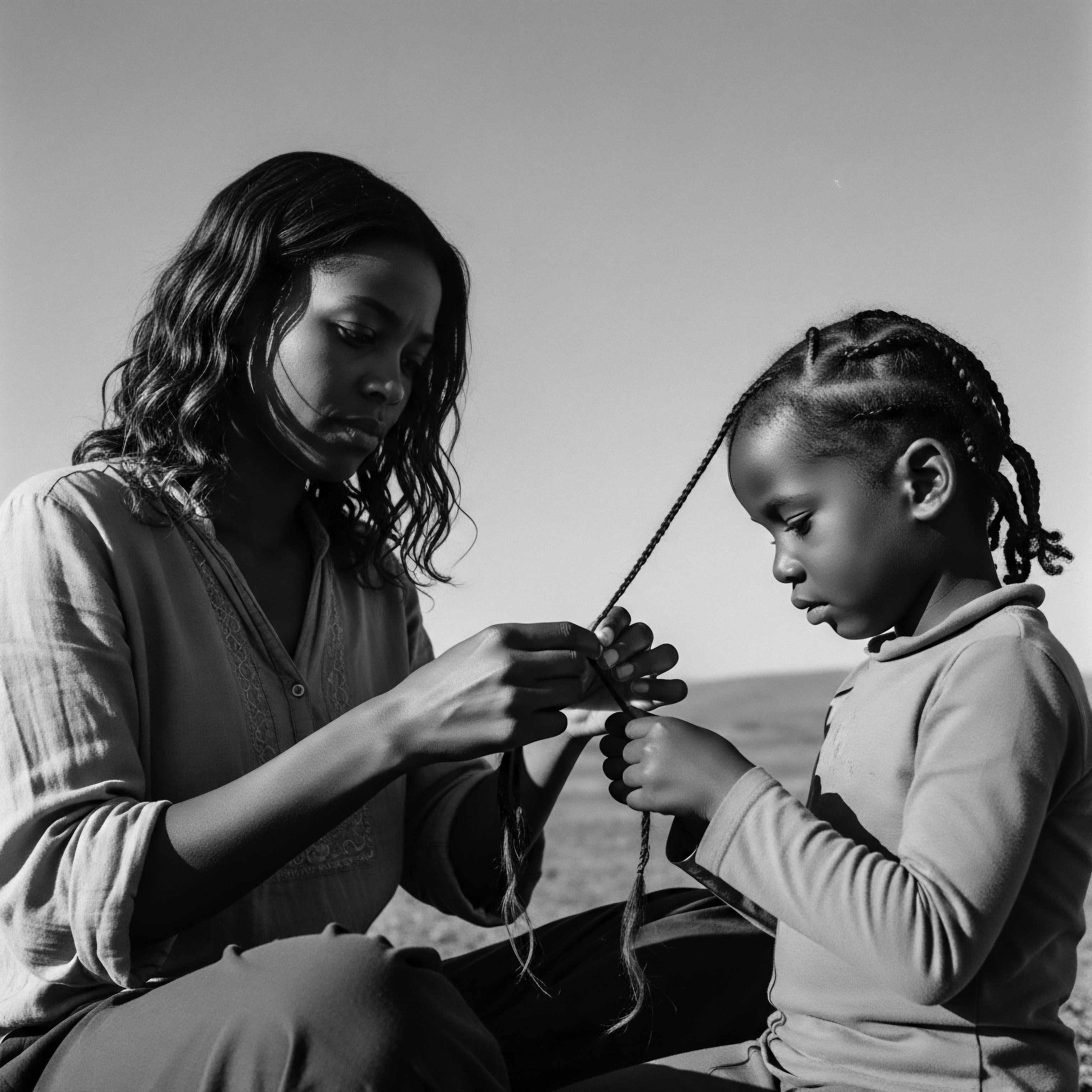
The Tender Thread ❉ Communal Grooming
The communal aspect of hair care, particularly in African cultures, underscored the social significance of scalp well-being. Hair braiding, for instance, often brought mothers, daughters, and friends together, strengthening familial bonds and preserving cultural identity. This shared experience extended beyond mere styling; it was a moment for storytelling, for imparting wisdom, and for ensuring the health of each other’s scalps through careful attention and the application of traditional remedies. The gentle touch of hands working through coils and kinks, applying nourishing oils and herbs, served as a tangible expression of care and collective responsibility.
The environment also played a crucial role in shaping these practices. In regions with arid climates, emphasis was placed on moisturizing ingredients to combat dryness and protect the scalp from harsh sun exposure. Conversely, in more humid environments, cleansing and balancing rituals might have been prioritized. This adaptive wisdom, passed down through generations, allowed communities to tailor their scalp care to their specific needs, always with an underlying recognition of the scalp’s foundational role.
- Shea Butter ❉ Widely used across West Africa, derived from the nuts of the shea tree. Its rich, emollient properties provide deep moisture and a protective barrier for the scalp, helping to alleviate dryness and soothe irritation.
- African Black Soap ❉ Originating from West Africa, this soap, crafted from the ash of plantain skins, cocoa pods, and palm leaves, offers gentle yet effective cleansing for the scalp without stripping its natural oils. It is rich in antioxidants and minerals, providing nourishment.
- Chebe Powder ❉ Hailing from Chad, this blend of herbs, seeds, and plants (including lavender croton and cherry kernels) is traditionally applied to the hair to retain moisture and prevent breakage, thereby indirectly supporting scalp health by reducing tension and manipulation.
- Rooibos Tea ❉ From South Africa, this tea, when used as a rinse, contributes antioxidants and minerals to the scalp, promoting a healthy environment for growth and potentially reducing inflammation.
| Ingredient Coconut Oil |
| Traditional Use Nourishing and protecting hair, used in many African and Caribbean traditions. |
| Contemporary Relevance for Scalp Well-Being Known for its antimicrobial properties and ability to penetrate the hair shaft, providing moisture and reducing protein loss, which supports a balanced scalp microbiome. |
| Ingredient Aloe Vera |
| Traditional Use Soothing scalp irritation, promoting hair growth, found in various indigenous practices. |
| Contemporary Relevance for Scalp Well-Being Possesses anti-inflammatory and hydrating qualities, calming irritated scalps and supporting cellular regeneration. |
| Ingredient Rhassoul Clay |
| Traditional Use Moroccan mineral clay used for cleansing hair and scalp without stripping natural oils. |
| Contemporary Relevance for Scalp Well-Being Acts as a natural detoxifier, drawing out impurities and product buildup from the scalp, thereby clearing follicles and allowing the scalp to breathe. |
| Ingredient Neem |
| Traditional Use Used in Ayurvedic and African traditions for its medicinal properties, including treating scalp conditions. |
| Contemporary Relevance for Scalp Well-Being Exhibits antifungal, antibacterial, and anti-inflammatory attributes, making it beneficial for addressing dandruff, itching, and other scalp ailments. |
| Ingredient These ancestral ingredients offer a timeless testament to the deep understanding of scalp care within textured hair heritage, often validated by modern scientific inquiry. |

Academic
The academic elucidation of Scalp Well-Being transcends rudimentary definitions, positioning it as a complex dermatological sub-system, integral to both dermatological science and the broader fields of public health, cultural anthropology, and even psychology. This delineation specifies the scalp as a highly vascularized and innervated integumentary extension, characterized by a dense population of pilosebaceous units, eccrine glands, and a distinct, yet dynamic, cutaneous microbiome. The optimal state of scalp well-being, from this scholarly perspective, signifies a finely tuned homeostatic balance across these physiological components, ensuring unimpeded hair follicular cycling, robust barrier function, and a resilient immunological response against endogenous and exogenous perturbations. The absence of inflammation, dysbiosis, excessive sebum production or deficiency, and follicular occlusion constitutes the physiological ideal, directly impacting hair fiber quality, density, and overall hair health.
Moreover, the academic inquiry into scalp well-being critically examines its bidirectional relationship with systemic health. Conditions such as nutritional deficiencies, hormonal fluctuations, chronic stress, and autoimmune disorders frequently manifest dermatological sequelae on the scalp, underscoring its role as a sentinel organ for internal physiological states. Conversely, persistent scalp pathologies can exert systemic effects, influencing psychological well-being, self-perception, and social interaction.
This holistic interpretation, therefore, necessitates a multidisciplinary approach, drawing from trichology, microbiology, immunology, and socio-cultural studies to fully comprehend the profound meaning and pervasive implications of scalp well-being. The examination of historical and cultural practices, particularly within textured hair communities, offers a compelling lens through which to observe the long-term consequences of both traditional wisdom and imposed norms on this vital anatomical region.
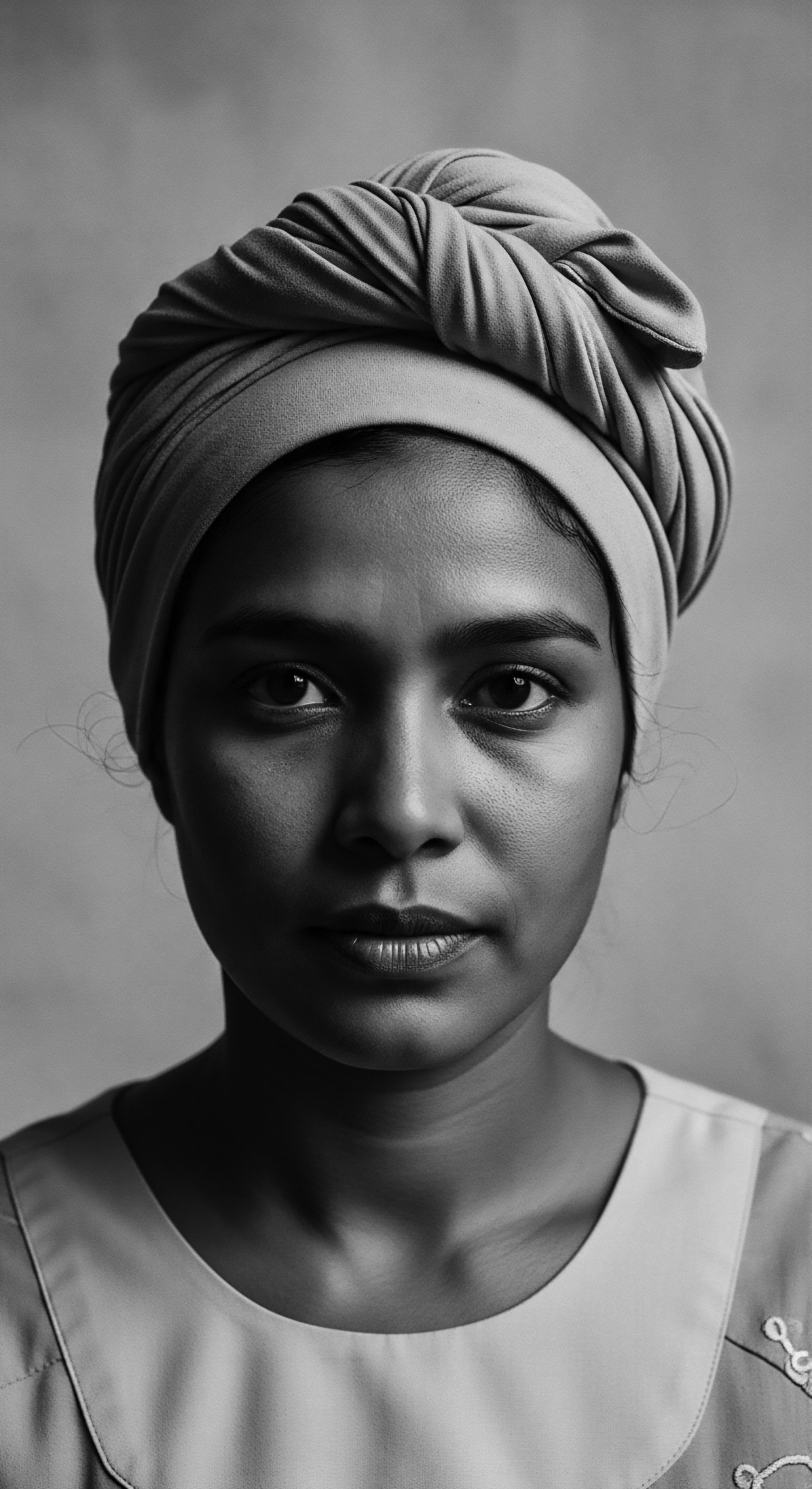
The Unbound Helix ❉ Historical Impositions and Their Legacy
The journey of scalp well-being for individuals with textured hair is profoundly shaped by a historical continuum, extending from ancestral practices of reverence to the enduring impact of colonial impositions and Eurocentric beauty standards. The historical narrative of Black and mixed-race hair, as chronicled by scholars such as Ayana Byrd and Lori Tharps in their work, Hair Story ❉ Untangling the Roots of Black Hair in America (2001), reveals a complex interplay of identity, survival, and adaptation. This historical context is paramount for a complete academic understanding of scalp well-being, as external pressures often led to practices that compromised the very foundation of hair health.
One particularly potent historical example that powerfully illuminates the connection between scalp well-being and textured hair heritage is the widespread adoption and long-term consequences of Chemical Relaxers within Black communities. Introduced as a means to achieve straighter hair textures, often in response to societal pressures for conformity and professional acceptance, these chemical agents presented significant dermatological risks. The use of lye-based relaxers, and even “no-lye” formulations, involves highly alkaline compounds designed to permanently alter the hair’s disulfide bonds. This process, known as lanthionization, when applied to the scalp, can lead to severe chemical burns, irritation, and inflammation.
A study published in Seminars in Cutaneous Medicine and Surgery in 2009 by Roseborough and McMichael highlighted the innate fragility of African hair and the potential for breakage, scalp inflammation, and permanent hair loss from inappropriate styling aids. They also noted that African-American patients have shown higher rates of sensitization to certain hair dye components, a risk amplified when combined with chemical relaxers. More recent research continues to underscore these concerns. A 2023 survey study, cited in “What Every Dermatologist Must Know About the History of Black Hair,” reported that Black respondents had the most frequent use of chemical straighteners compared to other racial groups, with 61% indicating use because they “felt more beautiful with straight hair.” These chemical straighteners contain harmful substances like parabens and phthalates, which have been linked to an increased risk of early puberty, uterine fibroids, and certain cancers.
The historical imperative to straighten textured hair, driven by societal pressures, often led to chemical practices that compromised scalp integrity and long-term health.
The pervasive messaging, often from hair care companies, that equated straight, smooth hair with beauty and professionalism, further perpetuated a negative perception of naturally coiled hair. This societal conditioning compelled many to subject their scalps to repeated chemical trauma, resulting in a disproportionate prevalence of dermatological disorders among Black women, including Traction Alopecia, Acquired Trichorrhexis Nodosa, and Central Centrifugal Cicatricial Alopecia (CCCA). Traction alopecia, often stemming from tight braiding, weaves, or extensions, and CCCA, a scarring alopecia that can result in permanent hair loss, are particularly relevant. While the direct causal link between chemical relaxers and CCCA remains a subject of ongoing research, it is widely acknowledged that relaxers weaken the hair shaft and can cause chemical burns, contributing to an environment conducive to such conditions.
The psychological toll of this historical pressure cannot be overstated. Research from TRIYBE for Mental Health Awareness Week 2025 emphasizes that the constant microaggressions and discrimination faced by Black individuals regarding their natural hair contribute to internalized racism, anxiety, and chronic stress. The pressure to chemically straighten hair to avoid discrimination in academic or professional spaces is a significant factor in poor mental health outcomes, creating a negative feedback loop that impacts both hair and psychological well-being. The sensation of a “burning scalp” from relaxers, a common experience recalled by many, symbolizes the literal and metaphorical pain endured in the pursuit of an imposed beauty standard.
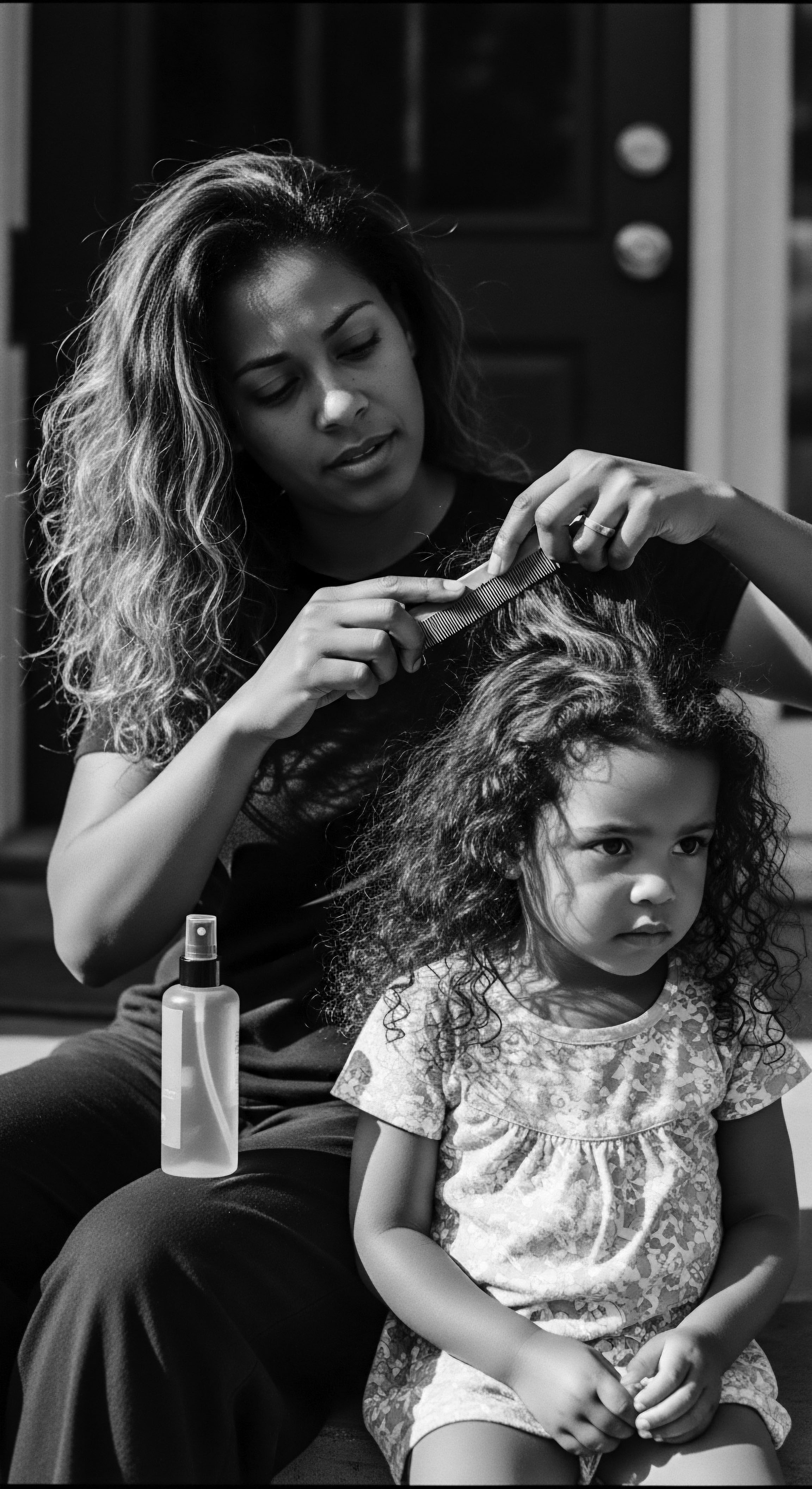
Microbiome and Barrier Function ❉ A Deeper Look
Beyond macro-level historical influences, a contemporary academic understanding of scalp well-being delves into the microscopic world of the scalp’s microbiome and its crucial barrier function. The scalp skin, a specialized immunological organ, maintains a delicate ecosystem of bacteria, fungi, and viruses. A balanced microbiome is essential for defending against pathogens, modulating immune responses, and maintaining the integrity of the epidermal barrier.
Dysbiosis, an imbalance in this microbial community, can lead to inflammatory conditions such as seborrheic dermatitis, folliculitis, and even exacerbate hair loss. The inherent structural differences of textured hair, including its elliptical shape and tighter curl patterns, can influence sebum distribution and product accumulation, potentially altering the scalp’s microenvironment and predisposing it to certain microbial imbalances.
The scalp’s barrier function, composed of the stratum corneum and its associated lipids, serves as the primary defense against environmental aggressors, irritants, and trans-epidermal water loss. When this barrier is compromised, either through harsh chemical treatments, excessive manipulation, or inflammatory conditions, the scalp becomes vulnerable. This vulnerability can manifest as increased sensitivity, dryness, itching, and heightened susceptibility to external damage.
The historical use of abrasive products or infrequent cleansing practices, often due to a lack of culturally appropriate alternatives or societal pressures, may have inadvertently contributed to long-term barrier dysfunction in textured hair communities. Modern scientific research now validates the ancestral wisdom of gentle care and nourishing ingredients in supporting this vital barrier, recognizing that a healthy scalp is a fortified one.
- Chemical Trauma ❉ Repeated application of chemical relaxers, hair dyes, and other harsh treatments can cause burns, irritation, and weaken the scalp’s protective barrier, leading to chronic inflammation.
- Traction-Induced Stress ❉ Tightly pulled hairstyles, including braids, weaves, and dreadlocks, can exert sustained physical stress on hair follicles, resulting in traction alopecia and localized inflammation.
- Product Accumulation ❉ The unique structure of textured hair can make it prone to product buildup, which, if not properly cleansed, can occlude follicles, foster microbial imbalances, and lead to conditions like seborrheic dermatitis.
- Societal Pressure ❉ The historical and ongoing pressure to conform to Eurocentric beauty standards often drives practices detrimental to scalp health, contributing to mental distress and physical damage.
| Aspect Core Belief |
| Traditional/Ancestral Philosophy Hair and scalp are sacred, connected to identity, community, and spiritual well-being; care is a ritual of reverence. |
| Modern Scientific Philosophy Scalp is a complex biological ecosystem; care is a dermatological and physiological necessity for hair health. |
| Aspect Primary Goal |
| Traditional/Ancestral Philosophy Protection, nourishment, and preservation of natural hair and scalp, often through communal rituals. |
| Modern Scientific Philosophy Maintaining physiological balance, preventing disorders, and optimizing follicular function through evidence-based methods. |
| Aspect Ingredient Sourcing |
| Traditional/Ancestral Philosophy Reliance on local, natural botanicals, oils, and clays, often wild-harvested or cultivated sustainably. |
| Modern Scientific Philosophy Formulation with scientifically researched compounds, both natural extracts and synthetic actives, targeting specific scalp concerns. |
| Aspect Methodology |
| Traditional/Ancestral Philosophy Gentle manipulation, oiling, herbal rinses, protective styling, and communal grooming sessions. |
| Modern Scientific Philosophy Cleansing, exfoliation, targeted treatments (serums, masks), massage, and clinical interventions where necessary. |
| Aspect Holistic View |
| Traditional/Ancestral Philosophy Hair and scalp health are interwoven with cultural identity, community bonds, and spiritual connection. |
| Modern Scientific Philosophy Scalp health is connected to overall physical and mental well-being, including stress and self-esteem. |
| Aspect The enduring wisdom of ancestral practices often finds affirmation in modern scientific understanding, revealing a continuous, evolving narrative of scalp care for textured hair. |
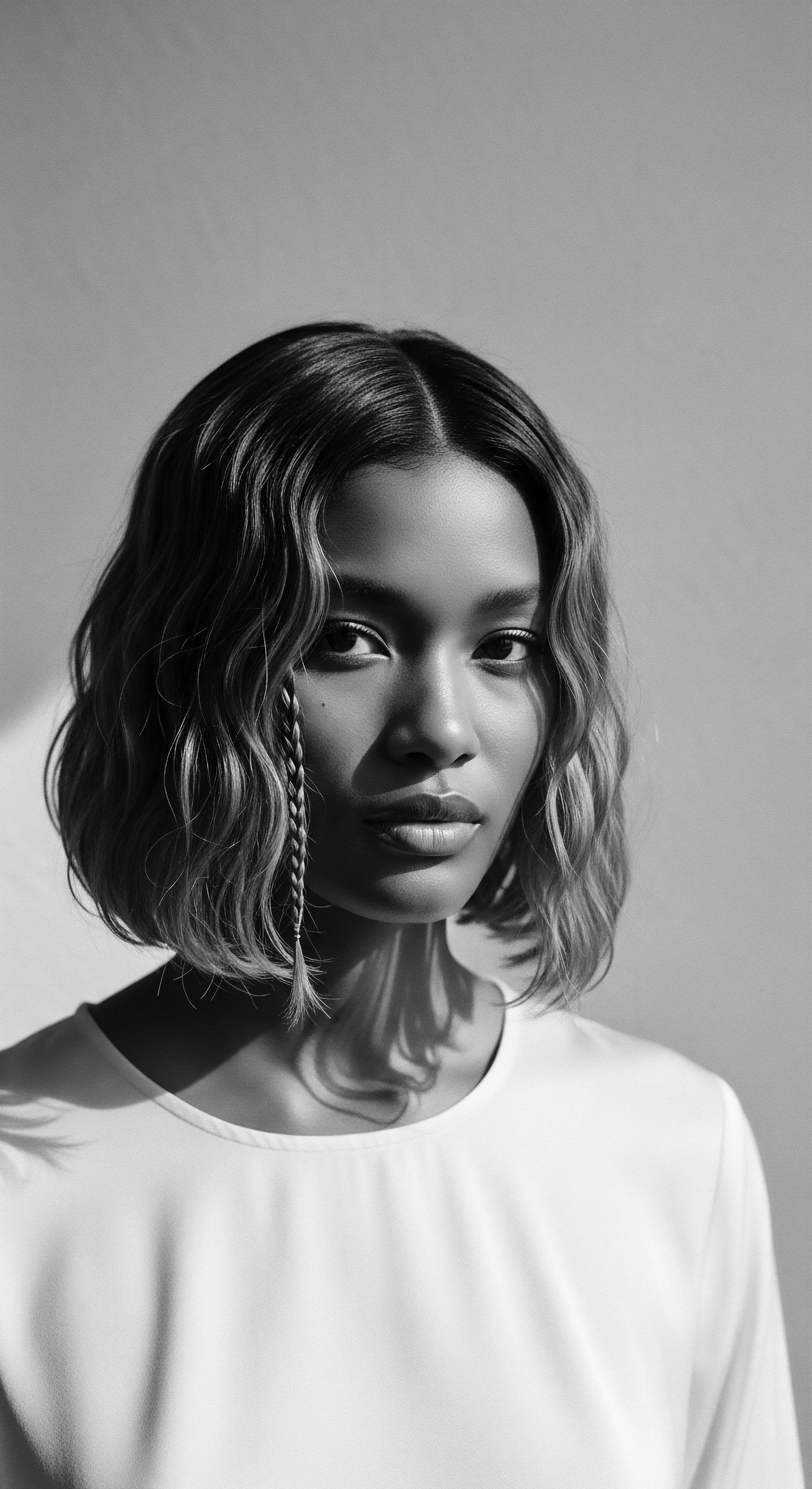
Reflection on the Heritage of Scalp Well-Being
As we draw this meditation on Scalp Well-Being to its thoughtful close, the echoes of its profound heritage reverberate with undeniable clarity. The journey from the elemental biology of the scalp, through the tender threads of ancestral practices, to the complex helix of identity and future aspirations, reveals a story far richer than mere dermatological function. For Roothea, the meaning of scalp well-being is intrinsically linked to the very ‘Soul of a Strand’ ethos, recognizing that each curl, coil, and wave carries within it the ancestral memory of resilience, adaptation, and beauty.
The care of the scalp for textured hair has never been a superficial act; it has always been a dialogue between the individual, their lineage, and the broader cultural landscape. From the earliest protective styling in ancient African societies to the communal braiding rituals that fostered bonds of kinship, the scalp has been a canvas for identity and a sanctuary for health. Even through periods of immense challenge, where external pressures sought to erase or diminish the inherent beauty of textured hair, the spirit of ingenuity and self-preservation ensured that practices of care, however modified, persisted. The enduring wisdom embedded in the use of natural ingredients and the power of touch, passed down through generations, continues to guide our contemporary understanding.
The scars on the scalp, whether literal from chemical burns or metaphorical from societal prejudice, serve as poignant reminders of a history navigated with profound strength. Yet, these marks also underscore the incredible capacity for healing and reclamation. As we look towards the future, the understanding of scalp well-being becomes an act of honoring the past, of validating ancestral knowledge with modern scientific insight, and of consciously shaping a future where every strand, and the scalp from which it springs, is celebrated in its natural glory.
It is a commitment to holistic care that nourishes not just the skin and follicles, but the spirit, the cultural memory, and the boundless potential of textured hair. The story of scalp well-being is, truly, a living archive, continuously being written by those who choose to tend to their crown with reverence and understanding.
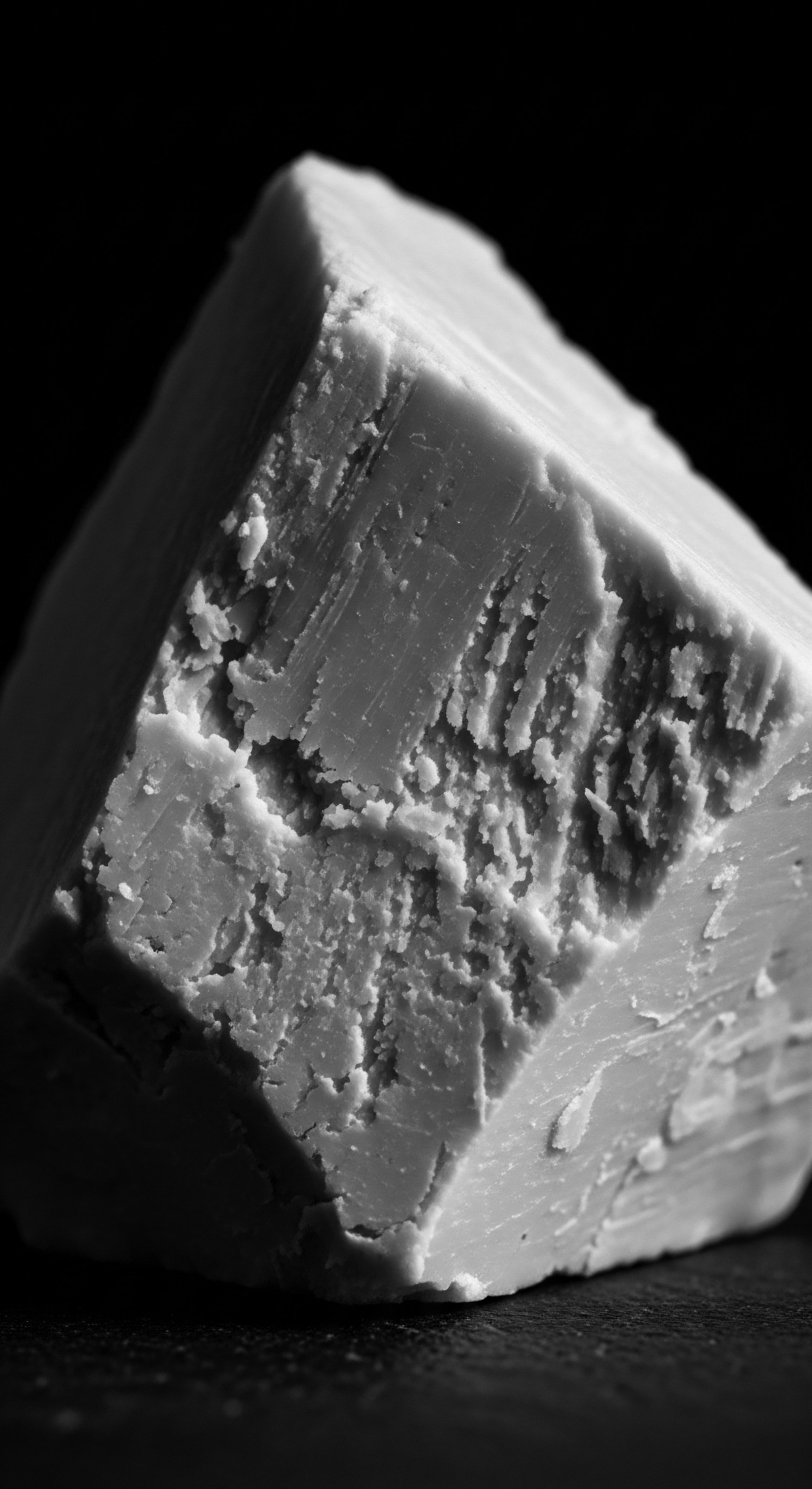
References
- Byrd, A. D. & Tharps, L. L. (2001). Hair Story ❉ Untangling the Roots of Black Hair in America. St. Martin’s Press.
- Roseborough, I. E. & McMichael, A. J. (2009). Hair Care Practices in African-American Patients. Seminars in Cutaneous Medicine and Surgery, 28(3), 103-108.
- Jackson-Richards, D. (2012, March 19). Styling practices can lead to serious hair and scalp diseases for African Americans. Henry Ford Health System.
- Dabiri, E. (2020). Twisted ❉ The Tangled History of Black Hair Culture. Harper Perennial.
- Ellington, T. N. (n.d.). Natural Hair. Paper presented by Dr. Tameka Ellington, educator and scholar of fashion design.
- Dadzie, E. E. et al. (2022). Afro-Ethnic Hairstyling Trends, Risks, and Recommendations. Cosmetics, 9(1), 18.
- Maharaj, C. (2025, May 15). Beyond the roots ❉ exploring the link between black hair and mental health. TRIYBE.
- Byrd, A. D. (2023, August 16). Strands of Inspiration ❉ Exploring Black Identities through Hair. Smithsonian National Museum of African American History and Culture.
- McMichael, A. J. (2023, November 30). What Every Dermatologist Must Know About the History of Black Hair. American Academy of Dermatology.
- Maharaj, C. (2024, June 17). How Colorism Impacts Black Women’s Physical and Mental Health. Literary Hub.
